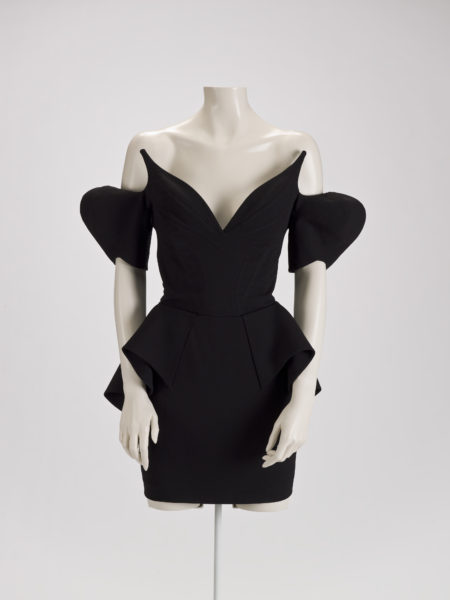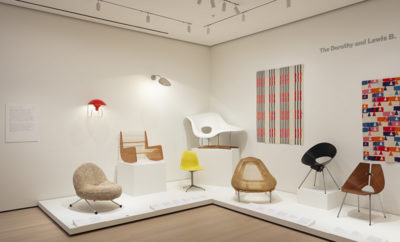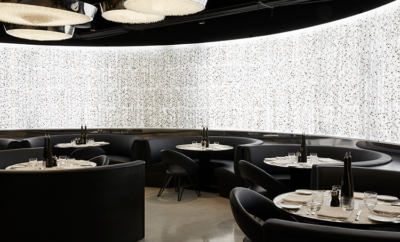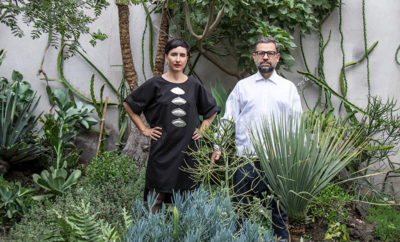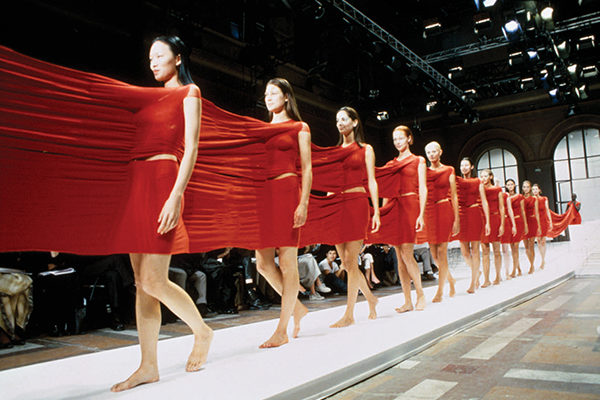 A photograph in the exhibition catalogue shows A-POC Le Feu by Issey Miyake and Dai Fujiwara from the Issey Miyake spring/summer 1999 collection, a garment similar to their A-POC Queen textile (1997), featured in the MoMA show. COURTESY OF A-POC LE FEU, 1999 SPRING SUMMER ISSEY MIYAKE PARIS COLLECTION/YASUAKI YOSHINAGA PHOTO.
A photograph in the exhibition catalogue shows A-POC Le Feu by Issey Miyake and Dai Fujiwara from the Issey Miyake spring/summer 1999 collection, a garment similar to their A-POC Queen textile (1997), featured in the MoMA show. COURTESY OF A-POC LE FEU, 1999 SPRING SUMMER ISSEY MIYAKE PARIS COLLECTION/YASUAKI YOSHINAGA PHOTO.
Feature
Fashion Forward
Since it’s founding in 1929 by “the daring ladies”—Abby Aldrich Rockefeller, Lillie P. Bliss, and Mary Quinn Sullivan—the Museum of Modern Art has been a leading institution in exploring all that is modern, from painting and film to multimedia and architecture. The first in the world to establish a department dedicated to architecture and design, helmed by architect and curator Philip Johnson, the museum elevated the significance of these fields through its vigorous acquisition of important objects and drawings as well as its many exhibitions. However, in spite of the museum’s brave forays into emerging fields, one that has been largely and notably absent from its programming has been fashion. More than seven decades after MoMA’s first and only show on clothing design, Are Clothes Modern?, organized by then architect and curator Bernard Rudofsky, the conversation is finally being revisited by another intrepid woman, Paola Antonelli, the senior curator in the department of architecture and design: The exhibition, Items: Is Fashion Modern?, is as detailed as it is comprehensive, as specific as it is universal—a look at fashion through multiple lenses: technology, politics, economics, the body, social status, and self-expression, among others.

An evening dress by Paul Poiret, c. 1933–1935, at left, is one of the exhibition’s 350 items. © MOMA/MARTIN SECK PHOTO.
Occupying the entire sixth floor, the exhibition presents 111 garments and accessories (referred to as “typologies” by MoMA), and a total of 350 objects, which run the gamut from handmade to mass-produced, from sportswear to luxury, from the quotidian to high fashion. You’ll find Elton John’s boots steps away from a Champion red hoodie, and a Christian Dior black dress in the same room as a sari. Diverse yet wearable, these items bear the same influence as a piece of furniture or graphic art, and certainly represent modern design. We had the chance to catch up with Antonelli to talk about the genesis and process of planning this expansive exhibition, and also, what might lie ahead.
Nicole Anderson/MODERN MAGAZINE: In 1995 you asked Philip Johnson why fashion had been overlooked by MoMA. Can you tell me more about his response? Did it prompt an interest in or plant the seed for Items: Is Fashion Modern?
Paola Antonelli: Philip Johnson simply said it really wasn’t in the purview of the collection as he saw it at that time, and as he was the chief and I was very new at MoMA, that was that. Of course, when you are told no, you always want to rebel against that somehow, or at least I do! As I write in the catalogue, when such an eminent scholar who had dipped his toe into styles and movements—which are themselves constructs— declined to investigate similar constructs in another medium, it piqued my interest. It just took a long while for the stars to align.
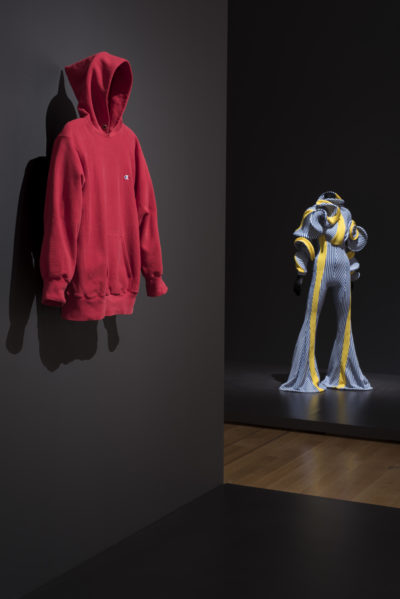
Jumpsuit Specimen 2017
by Richard Malone, 2017, strikes a pose beside a classic 1980s Champion hoodie. © MOMA/MARTIN SECK PHOTO.
MM: You wrote that the idea for Items was first conceived in 2011, so why did you decide to stage the exhibition now?
PA: The idea was percolating even earlier, perhaps as far back as 2004 with the exhibition Humble Masterpieces, but things in museums often move at quite a glacial, elegant pace. We have been working on the research for this exhibition in earnest since 2014, and with real slogging gusto for the last eighteen months. It takes a really long time to bring together something of this size. So it has been a slow and deliberate process.
MM: How did Rudofsky lay the groundwork for Items?
PA: Well, in many ways his show didn’t—because there was no other exhibition on fashion design between 1945 and 2017. And, in many ways, of course he did—because his project was a design centered exploration of what we wear and why we wear it, and Items embraces that, too. He is part of MoMA’s DNA in terms of its exhibition history, and our exhibition could not help but be inflected by his work, even though we, in the end, have a more ambiguous relationship with the term “modern” than he did. He was very oppositional within his own exhibition, very critically suggesting that clothing of his day was absolutely not fit for modern purposes. We see modernity as much messier, and indistinct in its causes and effects.
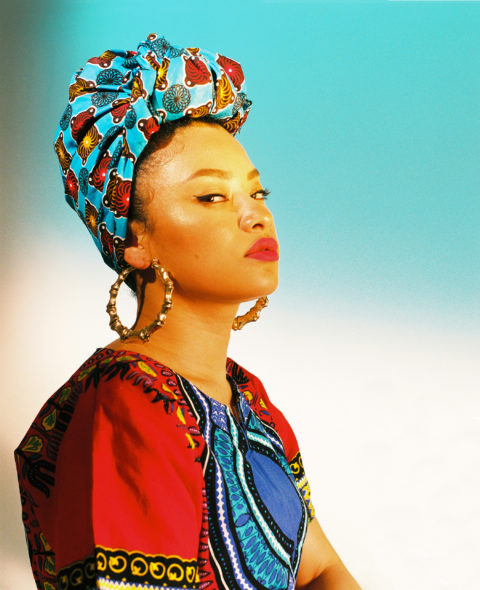
Photograph of a woman wearing a dashiki, door- knocker earrings, and a Dutch wax scarf on her head, as part of a photo essay by Monika Mogi for the exhibition catalogue. COURTESY OF MUSEUM OF MODERN ART (MOMA) AND MONIKA MOGI, © 2017 MONIKA MOGI.
MM: Fashion is often dismissed as inferior to other forms of design. Why do you think this is the case, and how do you try to upend this perspective in the exhibition?
PA: Design itself is often sidelined, and so it has been my life’s work to help people understand how central design is to everyday life, to give them a tool kit to better engage with it and be curious about it and give it the respect that it deserves. I hope with this exhibition that fashion is firmly understood as within the design pantheon, and worth the same time, curiosity, and respect. And, of course, like all forms of design, fashion should be critically appreciated because it affects our environment, our economies, and our well-being.
MM: What was the first item that made it onto the list and why?
PA: I think the first item on there was the simple white T-shirt, because MoMA had it in our collection already from the Humble Masterpieces exhibition in 2004.
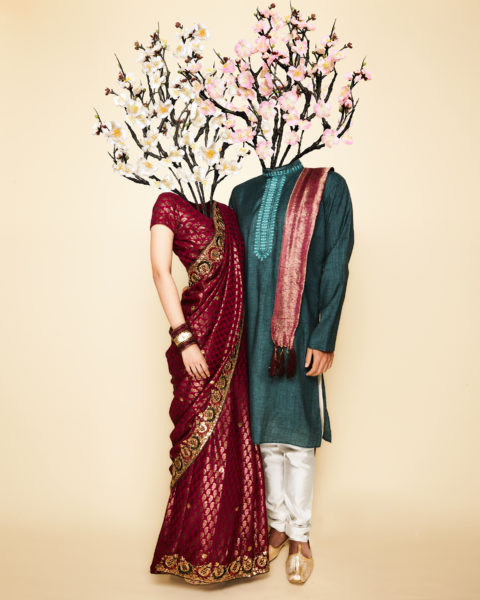
Photograph of Salwar kameez and sari as part of a photo essay by Bobby Doherty for the catalogue. © BOBBY DOHERTY, COURTESY OF MOMA
MM: Are there any items you considered but ultimately did not include, and, if so, what were the reasons?
PA: Plenty! We originally had a list of more than five hundred items, and we whittled it down to a more manageable number, 111. One day, we may indeed do an exhibition where we pick some of the ones on the list that didn’t make it! But one example of many is the sock, which has such an intriguing history that crisscrosses hygiene, knitting techniques, memory, nostalgia, wartime gifts, you name it! But we had to pick a number, otherwise we never would have finished the exhibition.
MM: How is fashion distinct from other forms of design such as architecture or furniture?
PA: Fashion is quite literally inescapable. In that way, I believe it’s very much like architecture in that it is something we engage with every day, often without ever really, truly considering its impact on us in depth. Where fashion is distinct is in the fact that we carry it on our bodies. It literally touches our skin on a continuous basis, and thus we have an incredibly haptic and immediate relationship to it, which brings with it a whole new set of design considerations that are quite distinct from those of architecture, products, furniture, or many other types of design.
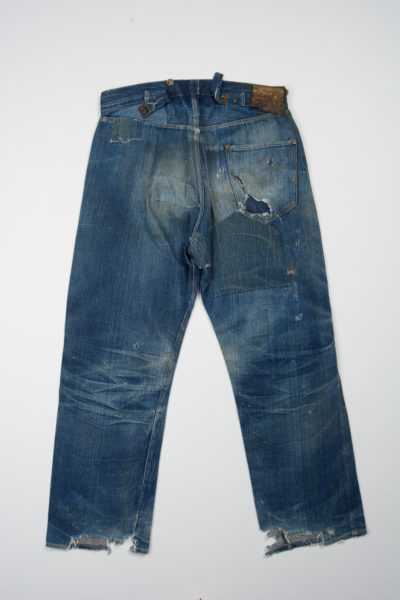
Levi Strauss & Co. waist overalls, 1890.COURTESY OF LEVI STRAUSS & CO. ARCHIVE
MM: As you delved into the acquisitions and planning for the show, what were the challenges? And any particularly surprising discoveries?
PA: One of the challenges that I have talked about a lot was finding mannequins for the exhibition, something that we’ve never done before at MoMA. We are really blessed to have Tae Smith, who was our master dresser, helping us. We did not acquire works for this exhibition; we borrowed the majority of them from other collections.
MM: Moving forward, is MoMA going to expand the acquisition of items under the rubric of “fashion”?
PA: A large part of my time at MoMA has been spent expanding the definition of design to truly bring it into the contemporary moment, so thinking about the digital, synthetic biology, and the like. I hope that I’m able to continue to expand this, and that fashion can be part of this conversation.
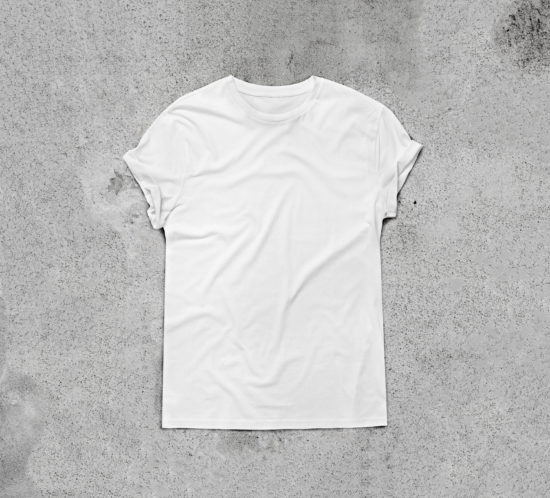
The very first item that made it onto MoMA’s list: the white T-shirt. COURTESY OF SHUTTERSTOCK/SFIO CRACHO.
MM: It took nearly three-quarters of a century for MoMA to hold an exhibition on fashion again. Is this an anomaly or the jumping-off point for future exhibitions on the subject? And, if yes, what might be on the horizon?
PA: We are just catching our breath after this exhibition has opened, and so I can’t say for sure what is on the horizon, but I am very hopeful that this is absolutely not an anomaly but an experiment that will engender further exhibitions of this type. It would be remiss for us not to understand fashion as firmly part of the history of modern and contemporary design. Watch this space!


